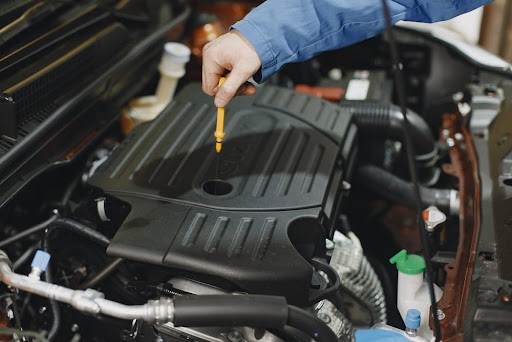Buying a car has never been easier, thanks to a large range of options, rising purchasing power, and simple financing options. It’s also a lot less difficult to learn to drive since you can easily find a huge number of driving schools with experienced professionals who can teach you how to drive in less than two weeks. What’s more difficult is understanding the significance of maintaining the car in good working order and it’s basic car components.
What would happen if your car stopped working in the middle of nowhere? Yeah we do know that today’s technology helps you in time of need but imagine your car breaks down on a stranded road. No, this isn’t a horror movie where a car breaks down and suddenly you get stuck in a haunted place.
Even though ghosts aren’t real but unwanted situations are and if you know your way around a car, it will always come in handy in times of need. Being independent is always a plus point. You don’t need to learn complex technicalities about your car, just knowing the basic car components and how to fix common issues is more than enough and will go a long way.
So let us dive into the basic car components –
Basic Car Components
Engine
Your car’s internal combustion engine is its heart and soul. The timing chain, camshaft, crankshaft, spark plugs, cylinder heads, valves, and pistons are among the components found in the engine block. The engine is what makes or breaks your car. A very important task in maintaining your car is the knowledge of Engine oil.
Many people believe that the purpose of engine oil in an automobile is to maintain proper combustion. They completely overlook the importance of oil in the lubrication, cooling, and cleaning of your car’s engine.
Not using proper grade Engine oil can actually create more problems and there will be more wear and tear, resulting in lower mileage and unscheduled repair. One thing that every automobile owner should be aware of is the importance of following the manufacturer’s suggested oil grade and replacement intervals.

Cylinder
A cylinder is an important component of a car’s engine. It’s a chamber where the fuel which is required for the car to start is burned to generate electricity. A piston is at the top of the cylinder, together with two valves: an intake and an exhaust valve.
The piston swings up and down, and its reciprocating motion produces the power that propels your car forward. If you want to learn more about cylinders and cylinder manufacturers, you can look for it at fabautoliners.com.
Battery
Another crucial element of your car is the battery. It’s what makes your car turn on in the first place. The jolt of energy required to power the engine as well as the different components of your car is provided by car batteries.
The battery turns the chemical energy into electrical energy, which is then transferred to the starter, allowing the engine to start. The battery provides the power that your car requires. Your car will not start without a battery.
Radiator
The radiator is situated beneath the hood of your car. It will be near the engine because it is responsible for cooling the engine and protecting it from overheating. The radiator helps in the cooling of the engine by removing heat from the coolant before it is pumped back into the engine.
Transmission
The transmission is a gearbox with gears and gear trains that utilizes the torque from the engine to shift gears and operate the vehicle.
Shock absorbers
Do you remember the day you went off roading and had so much fun, well it would not be that much fun if your car kept giving you jolts and injuring your head. All thanks to the person who invented shock absorbers.
When driving over roads that aren’t smooth, shock absorbers help in keeping your car steady. Your car’s shock absorbers are situated on the underside. To avoid further wear and tear on your car’s suspension system, immediate replacement is required.
Brakes
Thank god for those brakes, right? If it weren’t for those brakes, who knows how many people would’ve lost their lives. That is how important brakes are for your car, so let us know a little bit about them.
The friction between your tires and the road is what causes your car to slow down and halt. The brakes prevent the wheels from spinning. The brake pads and brake discs are responsible for creating the resistance required to cause this motion, and the discs wear down each time your car brakes.
Conclusion
Even though your car is made up of a thousand small little parts and every part is crucial for it’s working, knowing about the basic car components is more than enough for now. And now that you know a little bit about your car, you will find it easy to solve any problem that you might face on the road. Stay safe, Happy driving!!










